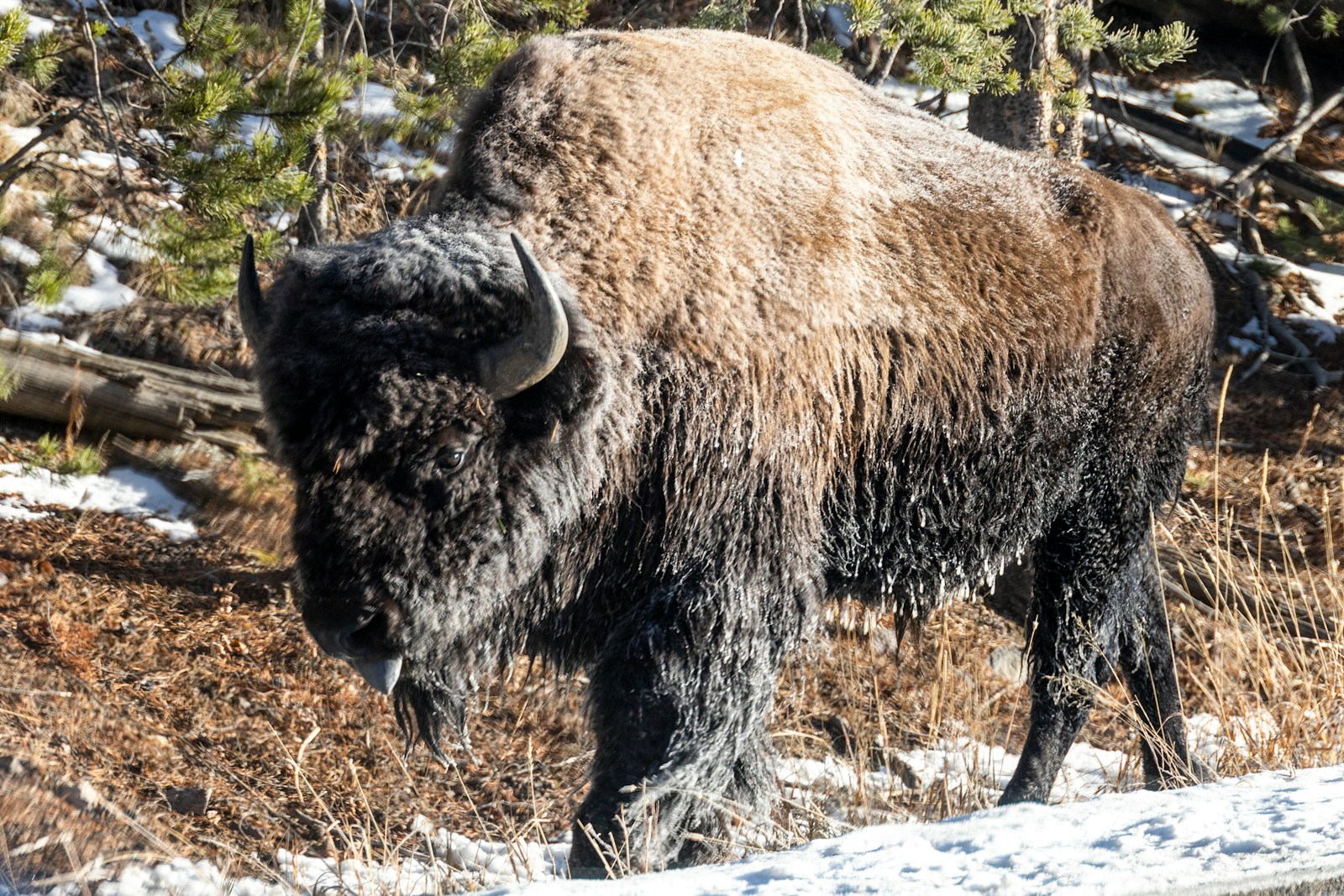In the heart of America’s first national park, a spectacle unfolds each year that echoes back to primordial times. The seasonal movement of Yellowstone’s bison—North America’s largest land mammals—represents one of the continent’s last intact wildlife migrations. As winter’s grip tightens and snow blankets the high plateaus, these magnificent beasts begin their journey toward lower elevations, following ancient pathways their ancestors traversed for thousands of years. This migration is not merely a survival strategy but a complex ecological dance that shapes landscapes, influences countless other species, and represents a rare window into the untamed rhythms of the natural world that once dominated the American West. Yellowstone’s bison migration stands as a testament to conservation success, ecological resilience, and the raw power of wild nature persisting in an increasingly developed world.
The Ancient Roots of Bison Migration
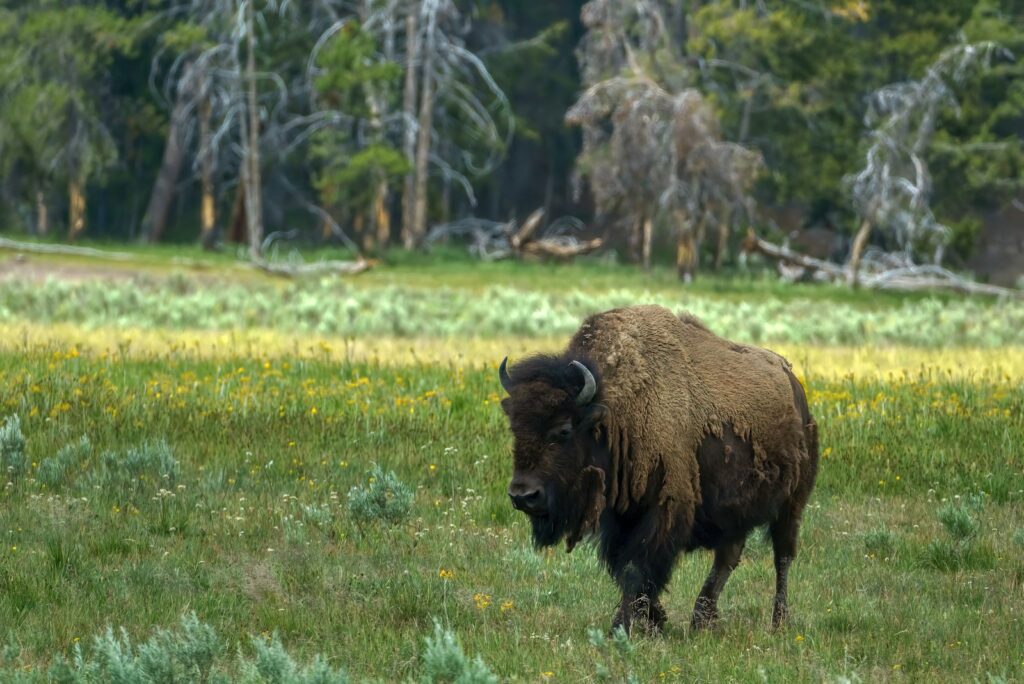
The seasonal movement of bison across the Greater Yellowstone Ecosystem represents a pattern that has persisted for thousands of years, long before human civilization took root in North America. Archaeological evidence suggests that bison have inhabited this region continuously for at least 10,000 years, with their migration routes etched into the landscape through countless generations. These pathways follow natural corridors shaped by geological features, river valleys, and mountain passes that provide the most efficient routes between seasonal ranges. The genetic memory that guides today’s bison along these routes connects them directly to ancestors that thundered across these same lands during the Pleistocene epoch, making this migration one of the oldest continuously occurring natural phenomena in North America. What we witness today in Yellowstone is the last major expression of a movement that once spanned the entire continent, with tens of millions of bison migrating across the Great Plains in numbers that early European explorers described as “darkening the landscape.”
Survival Through Seasonal Movement
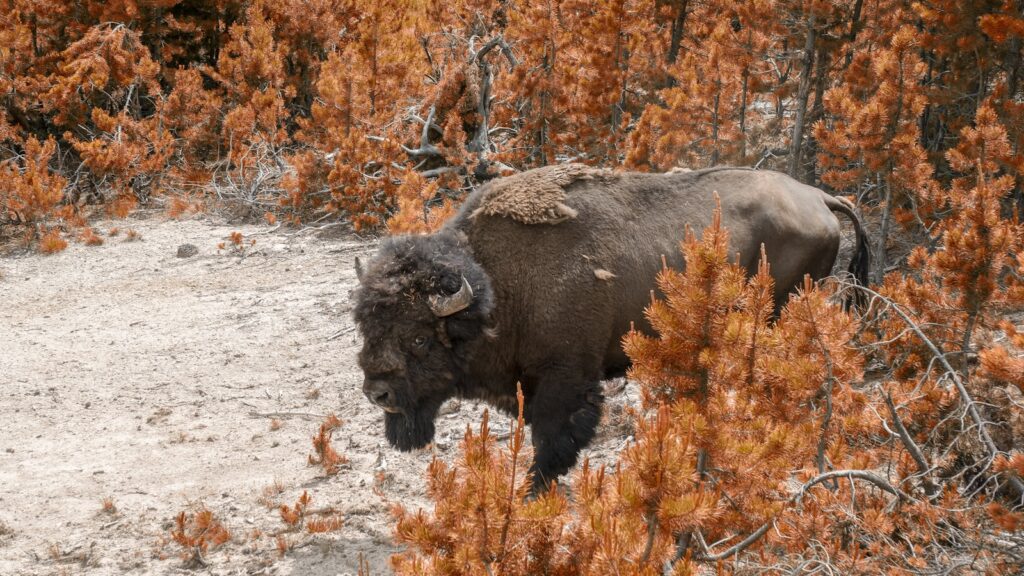
For Yellowstone’s bison, migration isn’t a choice but a necessary adaptation for survival in one of North America’s harshest environments. Winter in Yellowstone’s high plateaus brings several feet of snow and temperatures that routinely plunge below zero, making food nearly impossible to access in the park’s interior. Bison, despite their enormous size and impressive cold tolerance, must seek lower elevations where they can use their massive heads as snowplows to access the grass buried beneath. Their annual journey takes them from summer ranges at elevations above 8,000 feet down to winter ranges that can be 2,000-3,000 feet lower, where snowfall is lighter and grazing opportunities more abundant. These altitudinal migrations can cover distances of 30-50 miles, with bison navigating through challenging terrain including river crossings, steep mountain passes, and narrow valleys. The timing of these movements is precisely calibrated to seasonal changes, demonstrating the sophisticated environmental awareness these seemingly lumbering giants possess.
America’s Last Wild Bison Herd
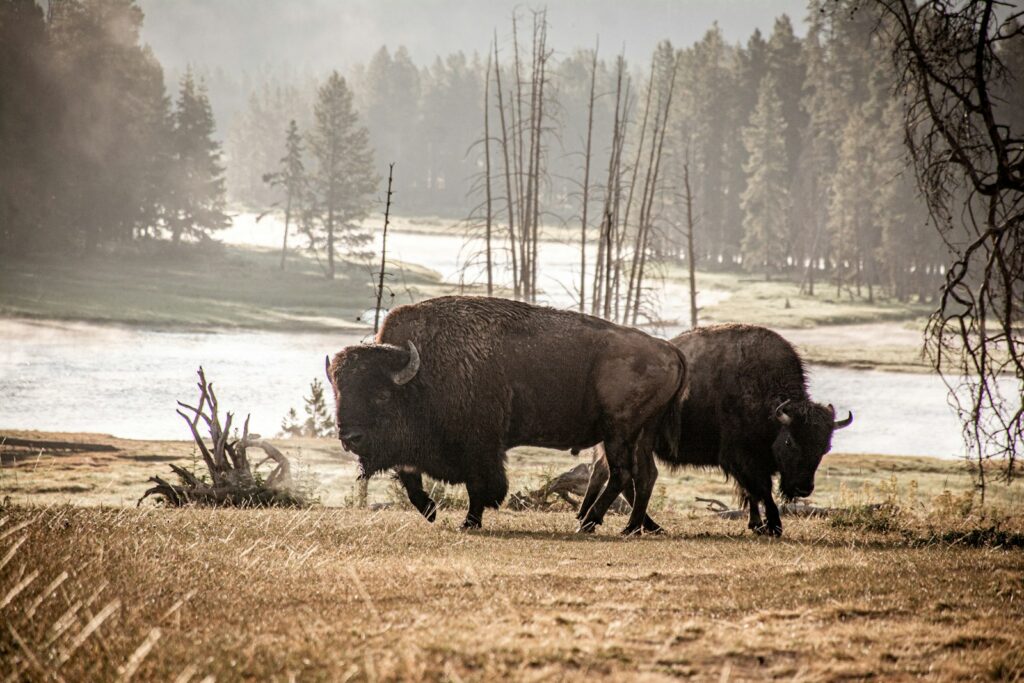
What makes Yellowstone’s bison migration particularly significant is that it represents the last continuously wild, free-ranging population of plains bison in America. Unlike the approximately 500,000 bison on private ranches across North America—most of which have been selectively bred and contain cattle genes—Yellowstone’s roughly 5,000 bison are the genetically pure descendants of just 23 wild bison that survived the mass slaughter of the 19th century. These animals have never been domesticated or artificially managed for commercial traits, allowing them to retain the behaviors, social structures, and ecological functions that characterized bison for millennia. Their migration patterns remain driven by natural factors rather than human management decisions, making Yellowstone one of the only places where visitors can witness genuinely wild bison behavior. This herd serves as a living link to the species that once numbered 30-60 million and shaped the ecology of North American grasslands for thousands of years.
Ecological Engineering Through Movement
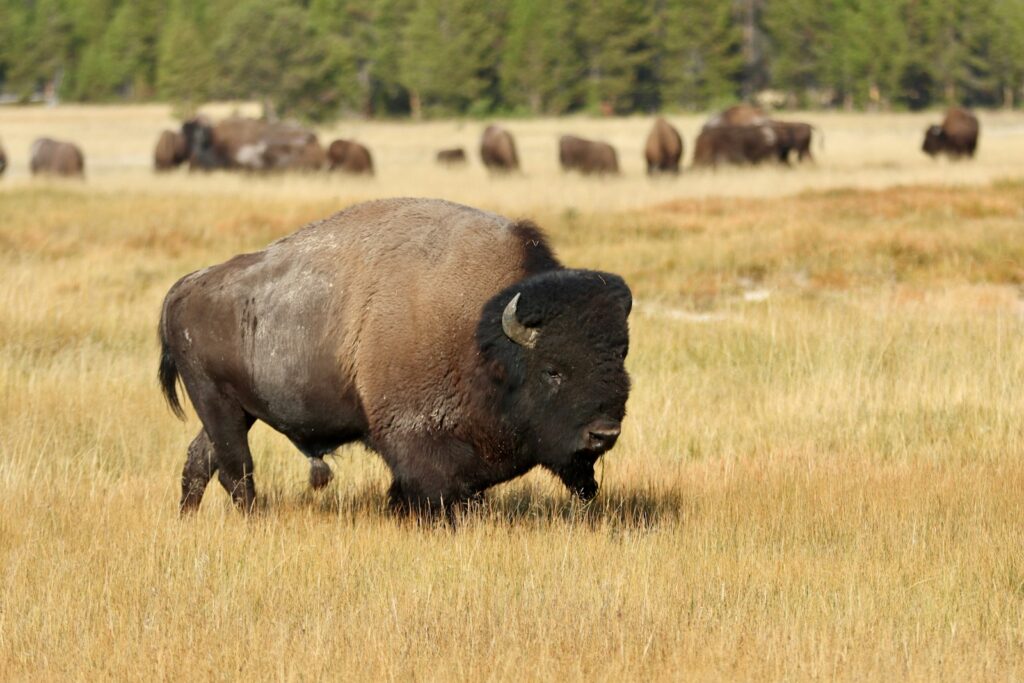
As bison migrate across Yellowstone’s diverse landscapes, they function as ecological engineers, physically transforming the environments they move through. Their heavy bodies—males can weigh up to 2,000 pounds—compact snow in winter, creating packed trails that smaller mammals use to navigate deep snowfields more efficiently. During spring and summer movements, their sharp hooves disturb soil, creating microdepressions that capture rainwater and seeds, increasing plant diversity in meadows and grasslands. Bison wallowing behavior—where they roll in dirt depressions—creates shallow basins that collect rainwater, forming ephemeral pools crucial for amphibians and insects. Perhaps most significantly, their selective grazing patterns during migration stimulate new plant growth, increasing productivity in grassland communities and enhancing habitat quality for numerous other herbivores. Research has shown that areas along migration corridors experience up to 40% greater plant growth following bison passage, demonstrating how their movement literally breathes life into the landscapes they traverse.
A Dynamic Population Strategy
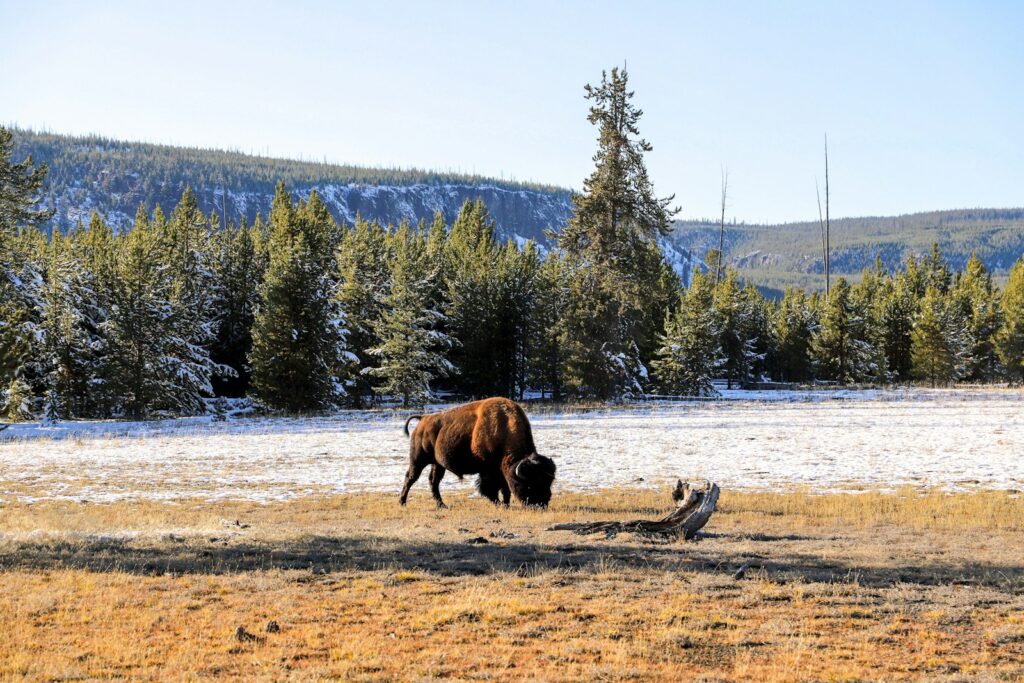
The annual migration serves as a sophisticated population management mechanism that has evolved over thousands of years. By distributing grazing pressure across a vast landscape seasonally, bison prevent overuse of any single area, allowing vegetation communities time to recover between periods of intensive use. This natural rotation system enhances the long-term carrying capacity of the ecosystem, enabling it to support larger numbers of bison than would be possible if they remained concentrated in one area year-round. Migration also functions as a natural population control, as the challenging journey and harsh winter conditions result in natural mortality that helps balance the herd with available resources. Calves born to migrating mothers show higher survival rates than those from sedentary populations, as migration exposes them to a wider range of forage options at optimal growth stages. The bison’s migratory lifestyle represents an evolutionary strategy refined over millennia that maximizes both individual fitness and population sustainability.
Rivers of Bison: Peak Migration Spectacle
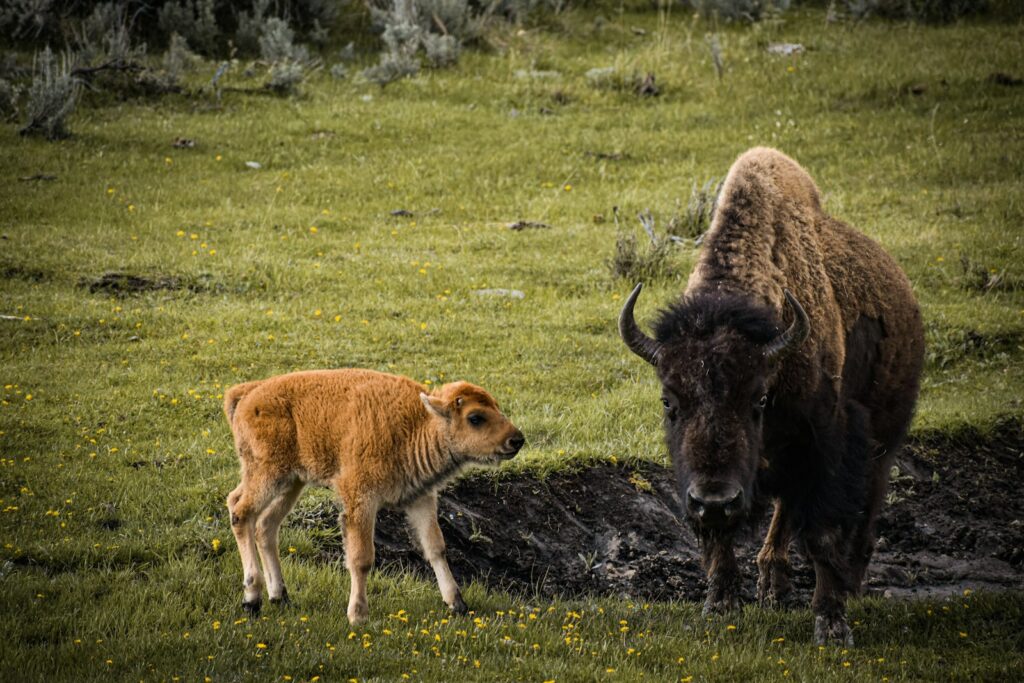
The most awe-inspiring phase of Yellowstone’s bison migration occurs during peak movement periods, typically in late autumn and early spring, when hundreds of animals may move together in massive, flowing columns that snake across the landscape. During these peak migration events, bison form dynamic social aggregations that can stretch for miles, creating what early travelers described as “rivers of dark bodies” moving across the plains. These huge groups follow traditional pathways with clear leaders—typically experienced older females who possess detailed knowledge of routes, water sources, and optimal feeding areas. The thundering of thousands of hooves echoes through valleys as these massive processions move with surprising coordination and purpose. Visitors fortunate enough to witness these peak migration events often describe them as life-changing experiences that connect them to the primeval power of untamed nature. Sound plays a significant role in these gatherings, with communication through grunts, bellows, and physical displays guiding the collective movement of the herd across challenging terrain.
Winter Survival Against Impossible Odds
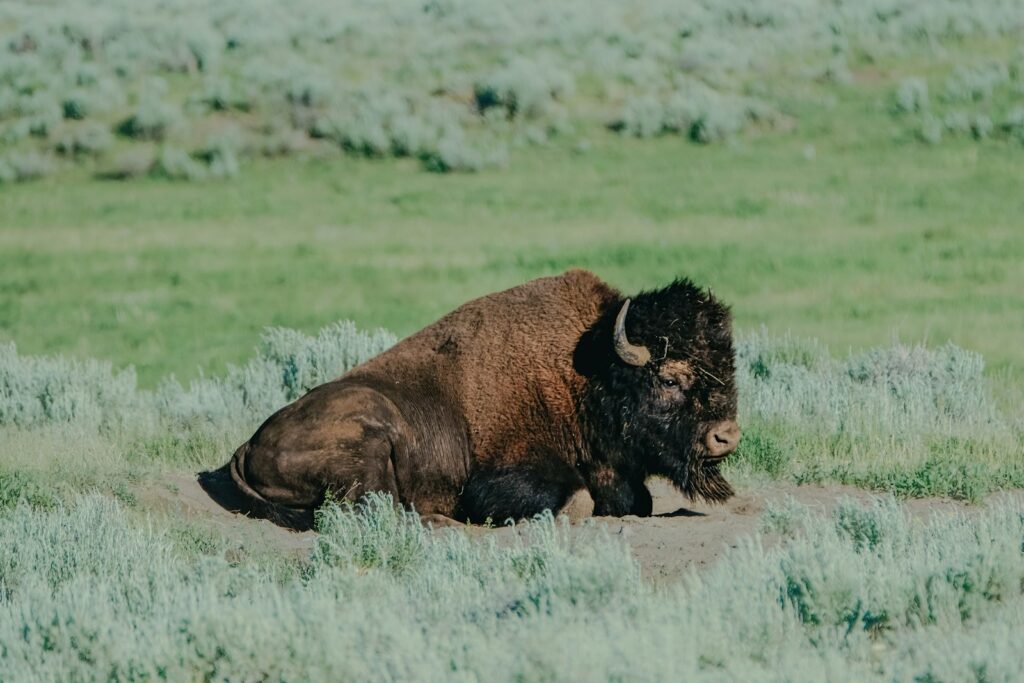
Winter in Yellowstone tests bison to their biological limits, making their migration a matter of life and death. With temperatures that can plunge to -40°F and snowpacks exceeding six feet in depth, bison employ remarkable adaptations to survive conditions that would kill most mammals. Their massive heads function as living snowplows, sweeping back and forth to clear paths to buried vegetation, while their thick hides and underfur provide insulation against brutal cold. Their metabolism slows dramatically during winter months, reducing energy requirements by up to 30% as they subsist primarily on dried grasses with minimal nutritional value. Winter migration brings them to thermal areas where geothermal heat melts snow, creating limited grazing opportunities around hot springs and geysers. The natural selection pressures of these extreme conditions have shaped Yellowstone’s bison into exceptionally hardy animals capable of thriving in an environment that represents the absolute edge of biological tolerance for large mammals.
Conservation Challenges at Park Boundaries
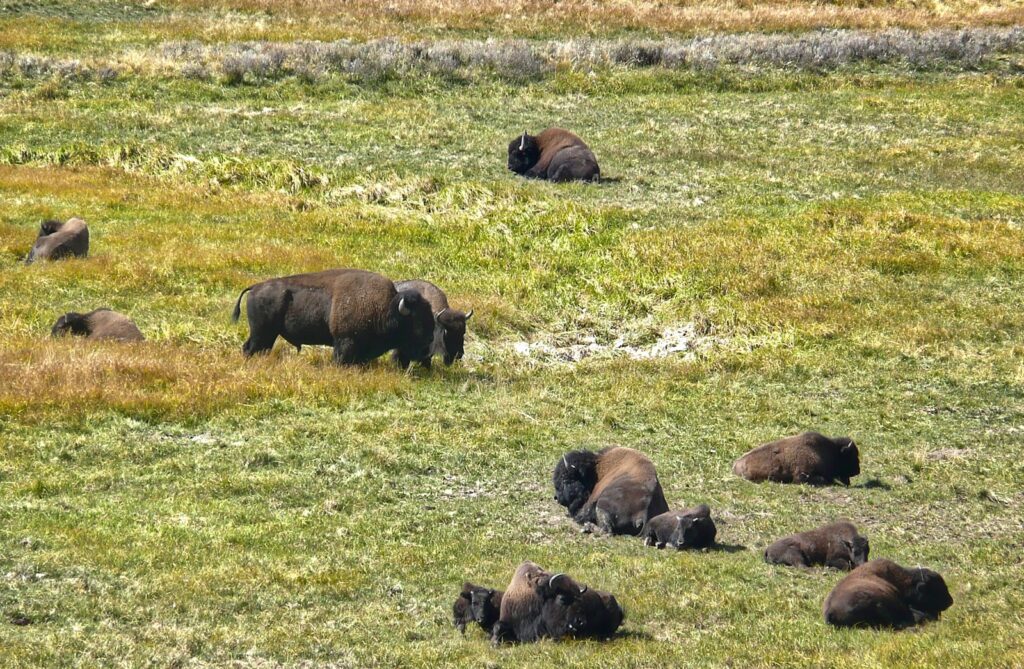
While the migration itself is a natural wonder, it also leads to one of the most contentious wildlife management issues in America when bison cross Yellowstone’s boundaries. Unlike other park wildlife that migrate freely, bison face potential lethal management when they exit the park due to concerns about brucellosis—a disease that can cause cattle to abort—despite limited evidence of transmission from bison to cattle in natural settings. This management approach has resulted in the slaughter of thousands of Yellowstone bison over recent decades when migration takes them beyond park boundaries. Conservation organizations continue to work toward solutions that would allow for expanded migration corridors and year-round tolerance zones outside the park. Recent progress includes the opening of some adjacent lands for limited seasonal bison use and the establishment of quarantine facilities that allow some migrating bison to be relocated to Native American reservations rather than being slaughtered. These boundary conflicts highlight the challenges of preserving natural ecological processes in a fragmented landscape where wild nature meets human development and agricultural interests.
Cultural Significance to Indigenous Peoples
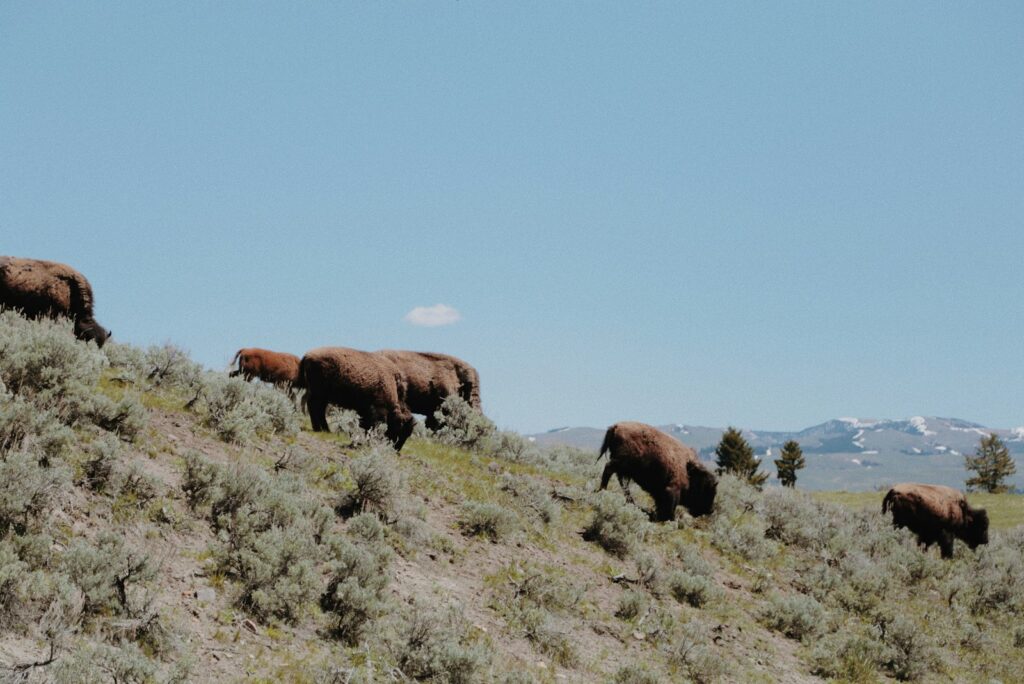
For thousands of years, the bison migration in the Yellowstone region held profound cultural and spiritual significance for numerous Indigenous tribes, including the Blackfeet, Crow, Shoshone, and Nez Perce, who synchronized their own movements to intersect with these great herds. These tribes developed sophisticated hunting techniques specifically adapted to migration patterns, and their cultural calendars were organized around the predictable seasonal movements of bison. Beyond providing essential food, tools, clothing, and shelter, migrating bison featured prominently in Indigenous spiritual beliefs, ceremonies, and origin stories that recognized the animals as relatives and teachers rather than simply resources. Today, many tribes are actively involved in bison conservation efforts and are working to restore cultural connections to these animals through programs that return Yellowstone bison to tribal lands. The annual migration serves as a living connection to ancestral traditions and knowledge systems that recognized the ecological wisdom embodied in these seasonal movements long before western science documented their importance.
Ripple Effects Through the Ecosystem
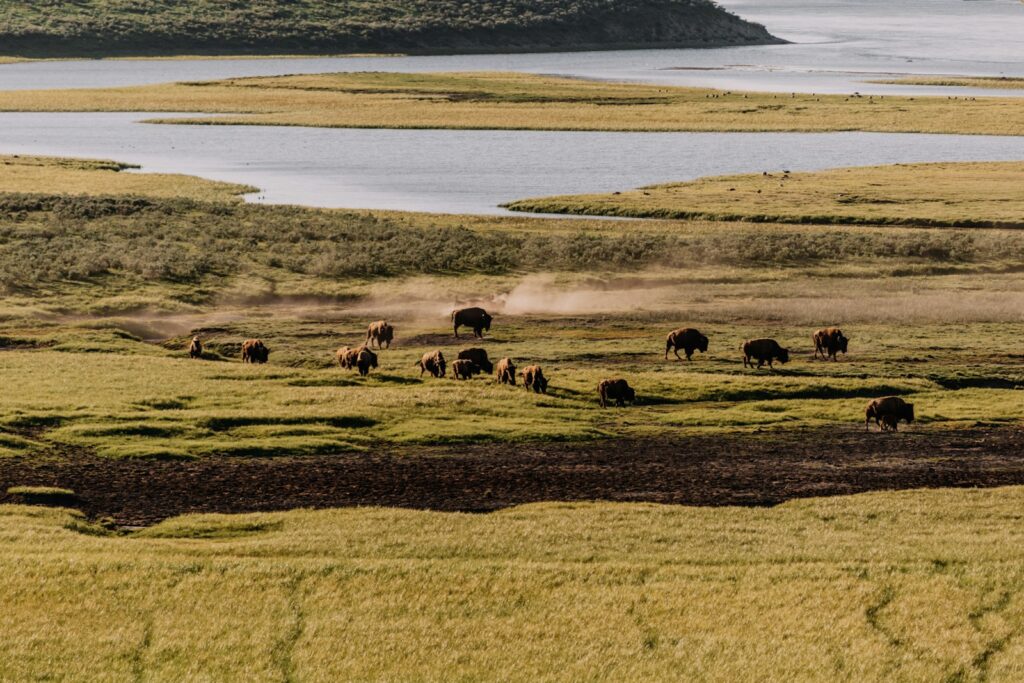
The bison migration creates ecological ripples that extend far beyond the animals themselves, influencing countless other species in what ecologists call “cascade effects.” Predators like wolves and grizzly bears adjust their own movements to intercept migrating herds, focusing particularly on vulnerable calves or weakened individuals. Scavengers including eagles, ravens, coyotes, and foxes follow migration routes to feast on bison that succumb to harsh conditions or predation. Small mammals benefit from bison grazing that maintains open grassland habitats, while birds nest in vegetation heights created by patchy grazing patterns. Even aquatic ecosystems are influenced, as bison crossings at rivers and streams disturb sediments, releasing nutrients that stimulate algae growth and benefit aquatic invertebrates and fish. Research has documented over 40 vertebrate species that directly benefit from bison migration effects, demonstrating how these massive animals function as a keystone species whose influence extends through multiple trophic levels. The seasonal pulse of movement effectively synchronizes biological activity across the entire Greater Yellowstone Ecosystem.
A Window Into Prehistoric America
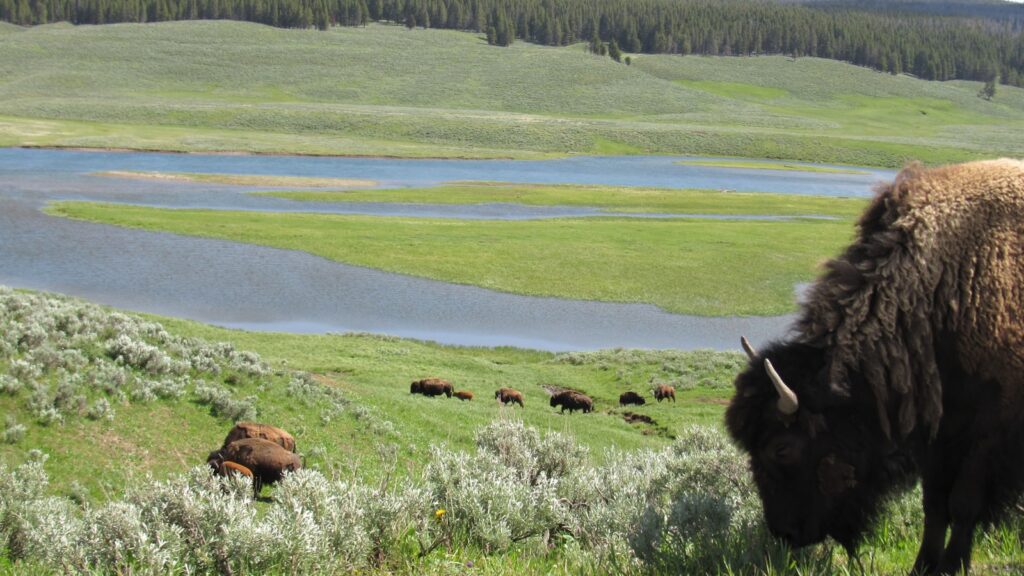
For visitors fortunate enough to witness this migration, the experience offers a rare glimpse into what much of North America looked like for thousands of years before European settlement. When watching hundreds of bison move across Yellowstone’s Lamar Valley, observers are seeing essentially the same scene that would have greeted human eyes 10,000 years ago—a visual time machine to the Pleistocene era. Unlike virtually every other wildlife spectacle in the United States, the bison migration involves the same species, in the same landscape, moving along the same routes as they did millennia ago. This continuity provides a living connection to the prehistoric American wilderness that has otherwise disappeared. Paleoecologists have compared Yellowstone’s winter migration scenes to those preserved in ancient cave paintings found across Europe and North America, suggesting that mass ungulate migrations have fascinated humans throughout our evolutionary history. This living link to the prehistoric past gives the migration educational and scientific value beyond its ecological importance.
Climate Change and Migration Adaptation
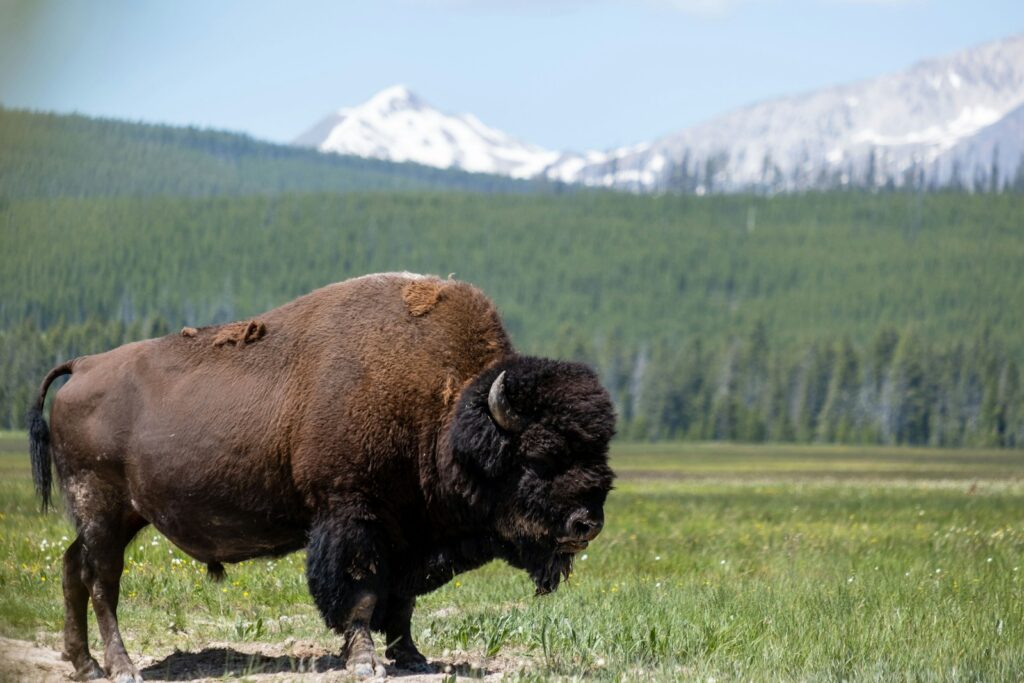
As climate patterns shift across the Greater Yellowstone Ecosystem, the bison migration is adapting in ways that provide scientists with valuable insights into how wildlife responds to environmental change. Researchers have documented shifts in migration timing, with spring movements occurring up to two weeks earlier than they did 50 years ago in response to earlier snowmelt and vegetation green-up. Winter migration distances have shortened in some years as warmer temperatures allow bison to access food at higher elevations than was historically possible. These behavioral adaptations demonstrate the species’ ecological flexibility and suggest potential resilience to climate change impacts. However, concerns remain about whether migration timing can continue to adjust quickly enough to match accelerating climate shifts, particularly as fragmented habitats limit the bison’s ability to explore new routes. Long-term studies of the migration provide a natural laboratory for understanding how large mammals adapt their movement patterns to changing environmental conditions, offering lessons that may prove crucial for wildlife conservation in an era of rapid climate change.
Technological Insights Into Ancient Behaviors

Modern tracking technology has revolutionized our understanding of bison migration, revealing sophisticated behaviors invisible to casual observation. GPS collars placed on select herd members have mapped precise movement corridors, demonstrated how bison navigate complex landscapes using topographical features, and shown how they make real-time adjustments based on changing snow conditions and food availability. These studies have revealed that bison possess remarkable spatial memory, returning to specific meadows and river crossings with pinpoint accuracy year after year. Data tracking has shown that experienced matriarchs lead migrations, with knowledge of routes apparently passed down through generations—a form of cultural transmission previously underappreciated in ungulates. Remote cameras placed along migration routes have documented how bison teach calves to cross rivers, navigate obstacles, and respond to predator threats during their journeys. The integration of ancient animal behavior with cutting-edge technology provides a fascinating intersection of prehistoric wildlife patterns and modern science, deepening our appreciation for the cognitive abilities of these seemingly simple herbivores.
Conclusion
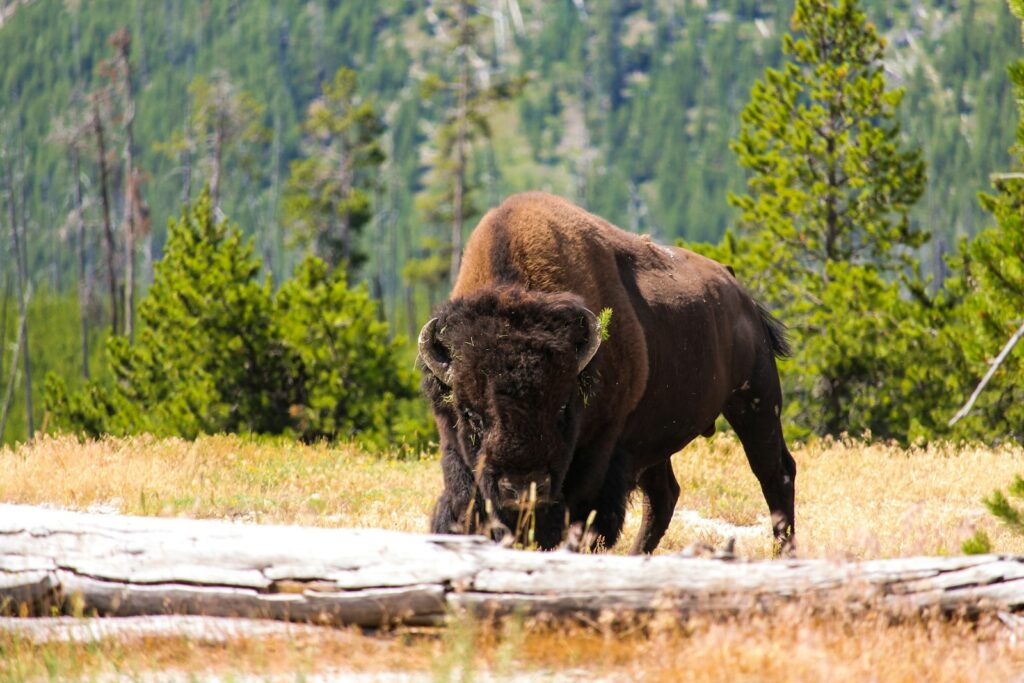
Yellowstone’s bison migration represents far more than a simple movement of animals between seasonal ranges—it embodies a living ecological process that connects our modern world to prehistoric America. As one of the last intact migrations of a keystone species in North America, it serves as both a conservation triumph and a sobering reminder of what has been lost across most of the continent. The rhythmic flow of these massive creatures across Yellowstone’s landscapes maintains ecological relationships that evolved over thousands of years, demonstrating nature’s remarkable capacity for self-organization and sustainability. In an era when most wildlife movements have been severed by human development, Yellowstone’s migrating bison offer hope that with proper protection and expanded migration corridors, some of the planet’s great wildlife spectacles can persist even in the modern world. For those fortunate enough to witness this ancient drama, the sight of bison moving through steam-shrouded valleys on a winter morning offers a transcendent connection to the wild heart of America that beats on, against all odds.

